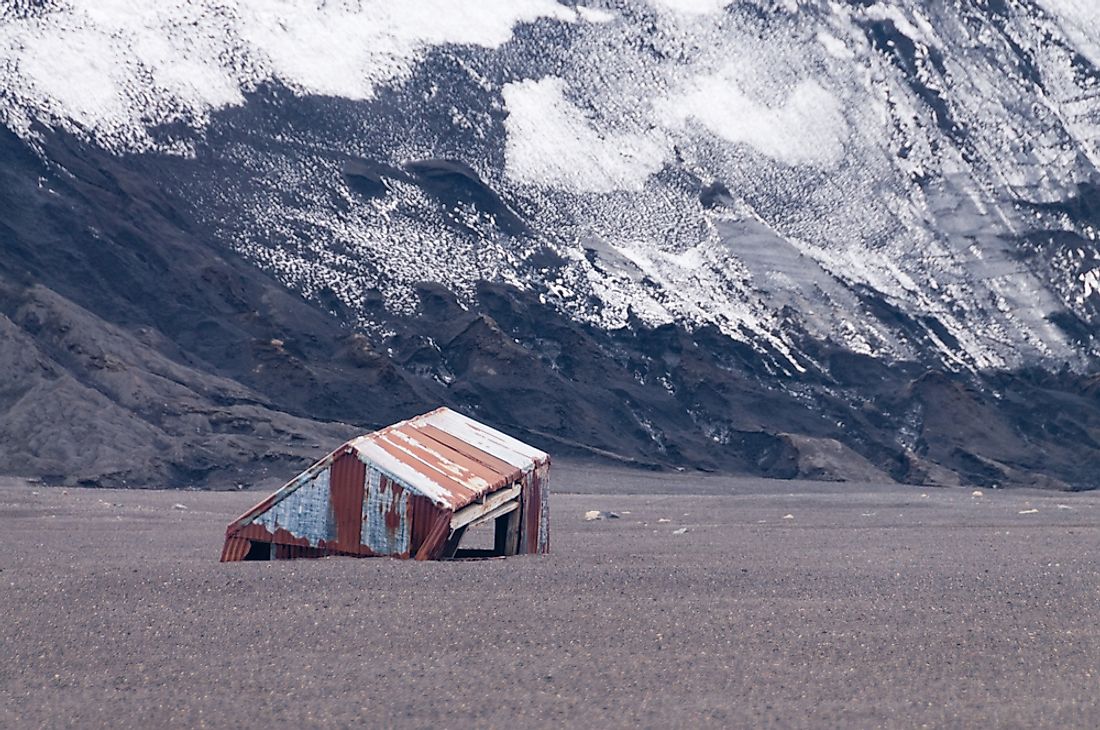What is Glaciovolcanism?

What is Glaciovolcanism?
To understand what is glaciovolcanism, we first need to understand the meaning of the term “volcanism”. The phenomenon of the eruption of magma to the surface of the Earth, the moon, or a planetary body with a solid-surface, is referred to as volcanism. Volcanism on Earth leads to the release of volcanic gases, lava, and pyroclastics to the surface through a vent or a break on the surface. Glaciovolcanism is thus a special field of volcanism that is associated with glacial ice.
Glaciovolcanism is a very young science born out of sporadic research that is only less than a century old. The fact that the researchers need to overcome hostile environments to study this science could be one of the reasons for the slow rate of experiments concerning this field. Research in glaciovolcanism has, however, dramatically increased since 2000. Examples of events related to the phenomenon of glaciovolcanism are well known in the glaciated regions of the world like Antarctica and Iceland.
Forms of Glaciovolcanism
Glaciovolcanism can be classified into three types: subglacial volcanism, supraglacial volcanism, and ice-marginal volcanism.
Subglacial Eruptions
When a volcano beneath glacial ice erupts, such an eruption is known as a subglacial eruption. It leads to the interaction of hot magma with snow and ice and thus generates meltwater which can lead to large-scale glacial outburst floods called jökulhlaups. Such types of floods are highly hazardous to areas experiencing them and lead to the wanton destruction of property and life. Lahars composed of ice, volcanic debris, and meltwater also might be generated during a subglacial eruption. The 1969 Deception Island eruption in the Antarctic, the 1996 Gjalp Eruption in Iceland, and the 2010 Eyjafjallajökull Eruption in Iceland are examples of subglacial volcanic eruptions that occurred in recent times.
Landforms Resulting From Subglacial Eruptions
Tuyas and subglacial mounds are distinct landforms that result from glaciovolcanism. Tuyas are volcanoes with flat tops and steep sides that are created by a volcanic eruption beneath a thick glacier. The lava cools quickly on coming in contact with the ice, resulting in steep sides of the volcano. The Tuya Butte found in the Tuya River region in the Canadian province of British Columbia is an example of such a landform. A subglacial mound is a type of volcano that is formed by the eruption of lava beneath a glacier without the magma reaching the surface of the ice. In such eruptions, the magma is not hot enough to melt a vertical pipe through the ice and hence cools down and collects as pillow lava and hyaloclastite lava beneath the ice. When the glacier retreats, subglacial mounds become visible as uniquely-shaped landforms on the surface of the land. Subglacial mounds are found in Antarctica, Iceland, and British Columbia.
Supraglacial Eruptions
When a volcano erupts and deposits lava directly onto the surface of a glacier, this type of glaciovolcanism phenomenon is known as supraglacial eruptions. Here, the magma travels through the entire thickness of the glacier or ice sheet to reach the vent at the top and bursts out volcanic debris, lava, and gases on the surface of the glacier. Such eruptions often create huge volumes of meltwater as the lava comes into direct contact with the ice and this often leads to deadly floods of surrounding areas.
Ice-marginal Volcanism
In this form of glaciovolcanism, a volcano does not erupt on the surface of or beneath a glacier. However, here the lava flow from a volcano comes in lateral contact with a glacier or the margins of an ice sheet and this phenomenon of glaciovolcanism is labeled as ice-marginal volcanism. Here, as the lava flows, the front of the flow quickly cools down upon contact with ice. The solidified lava now forms a barrier to the rest of the lava flow which now begins to pool at the barrier and no longer comes in contact with ice. Finally, when the glacier or ice sheet recedes, the lava front remains as a steep, large, and unstable cliff face.
Importance of the Study of Glaciovolcanism
The study of glaciovolcanism allows scientists to decipher the probabilities of future volcanic eruptions in glaciated regions of the world and the possible effects of such eruptions. The study of glaciovolcanism also reveals information about the origin of various volcanism-related geological features in glaciated regions and helps derive the critical parameters of past ice sheets such as the structure of the ice sheet, the surface elevation of the ice sheet, its thickness, and more. Research and investigations in the field also aid in Pleistocene climate record research, Martian geoscience research, and helps explore the relationship between deglaciation and volcanism.
It is hoped that in the future the knowledge generated from the study of glaciovolcanism will improve the ability of concerned personnel to effectively monitor events related to glacivolcanism and implement measures to overcome such hazards. The fact that in recent times eruptions like the Eyjafjallajökull eruption in Iceland have exhibited their ability to cause widespread damage, have created a greater need to delve into the depths of glaciovolcanism: the processes, causes, and effects.











